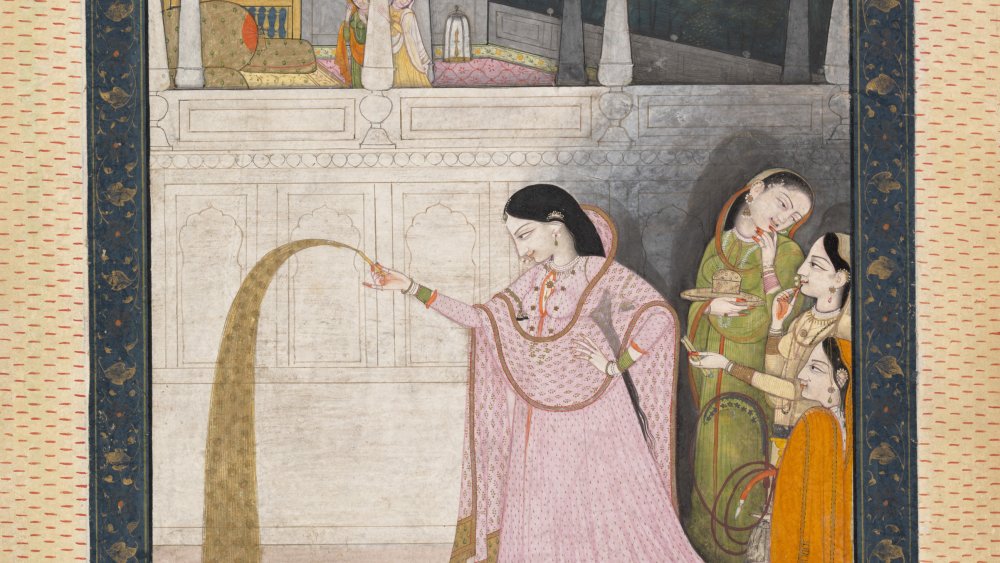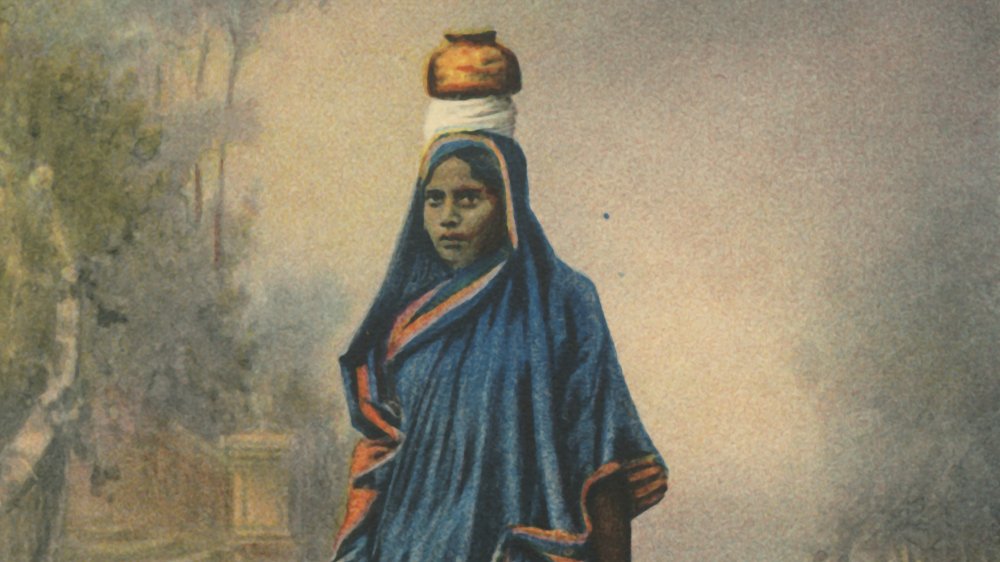What Life Was Like For Women In Ancient India
When you think of ancient cultures, it can be jarring to realize how much has changed, especially when it comes to the social status of women. In ancient India, women's roles have been subject to wide variation, with their rights gradually being withdrawn as time went by.
Patriarchy has always been strong in ancient India but this did not mean women were subjugated all the time. During the Vedic period, around 1500 BC, women held an honored place in society, according to Miscellanea Geographica. Women could participate in war, gymnastics, public activities, decision-making, and education. Their importance extended beyond the home and their education was mostly equal to men. There were two different women scholars: those who studied the Vedic texts their entire lives and those studied only until they got married. Scholars had a responsibility to teach others in society, so both of these types of female scholars had a large role in education. In fact, there were many respected women philosophers in that period.
One reason for women's elevated role in society during the Vedic period was the worship of the goddess Lakshmi, per Hinduism Today. Girls were revered as forms of Lakshmi but boys were not regarded as such for the gods Rama and Krishna.
Things changed for women in India
But this reverence began to decline in the later Vedic age, says Miscellanea Geographica. Women's economic status and political participation fell. This continued to deteriorate when the Manusmriti texts were adopted.
Indian History writes that the code disapproved of widow remarriage, something previously allowed. It also prohibited women from upanayana or the rite of passage marking a student's entrance into scholarship. Soon, reports Miscellanea Geographica, women were disallowed from inheriting their husband's property and began to be considered as impure and were treated as second class citizens. During the British occupation, the British government took a stand against child marriage and sought to provide more liberty for women.
Things have changed in India now. Women generally have more rights and are educated in large numbers. Still, India lags behind in gender equality, per The Washington Post, and some women still feel unsafe. Though many in India questioned its methodology, a controversial report released by the Thomson Reuters Foundation stated India as the most dangerous place for women, according to the BBC. But in today's modern age, women in India use various means to make their voices heard and participate in decision-making. Just like women in the Vedic age did.

